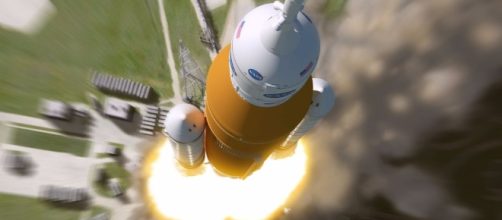NASA announced that, after due consideration of a proposal by the White House to put a crew on the first flight of the Orion spacecraft launched by a heavy lift space launch system around the moon, that it will stick with the original plan to keep the mission uncrewed.
The announcement of the decision, which was taken by both NASA and the White House jointly, was made at an audio press conference conducted by acting NASA Administrator Robert Lightfoot and William Gerstenmaier, associate administrator for NASA’s Human Exploration and Operations Mission Directorate.
Why is NASA sticking with the original plan for the Orion-SLS test flight?
After a two-month study of the possibility of putting people on the flight, designated as Exploration Mission-1 or EM-1, NASA concluded that the scheme was technically feasible.
However, the increased costs, some $600-900 million, plus adding months to the preparation schedule suggested that the benefits of an earlier crewed mission around the moon did not justify them. NASA would have had to scramble to add abort and life support capability to the mission to accommodate a crew. The Space Agency informed the White House, which concurred with the decision.
Exploration Mission-1 to be delayed to 2019
NASA also confirmed that the date of the first launch of an Orion on top of an SLS would be delayed from its latest date of November 2018 to be sometime determined in 2019.
Delays in the development of both vehicles due to new manufacturing techniques plus incidents such as the tornado that struck the rocket manufacturing and research facility at Michaud have combined to slip the schedule. The first crewed flight of the Orion-Space Launch System in late 2021 is likely to be affected as well.
Where does this leave the Trump Administration?
It had become clear that if the Trump White House desires some early deep space mission to burnish its impact on the space program, it cannot rely on NASA to execute for some years. Possibly when it gets around to choosing a new permanent administrator an evaluation can be made into why it is taking the space agency so long.
In the meantime, some commercial rockets and spacecraft are becoming available should the White House care to make use of them. SpaceX’s Elon Musk has boasted that he will do his own circumlunar mission in 2018 with a specially outfitted Dragon spacecraft launched from a Falcon Heavy rocket.
To be sure, SpaceX, like NASA, has endured delays in new hardware development. But, the Trump administration will have to answer the question, would a partnership with commercial companies such as SpaceX and its rival Blue Origin, which is developing the New Glenn rocket, get Americans back to the moon, for example, that with just NASA alone?


